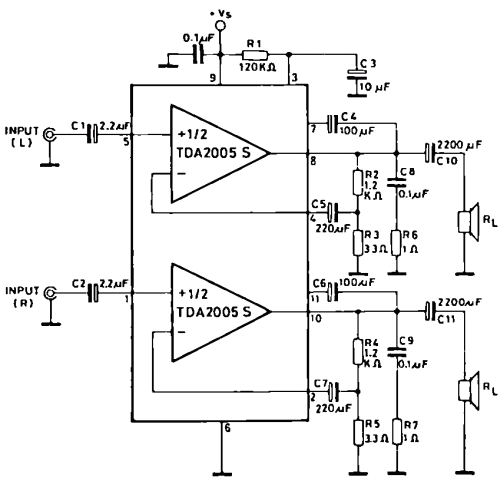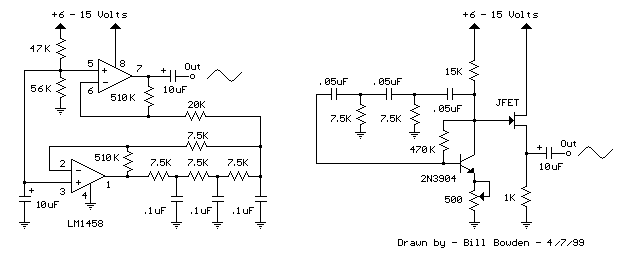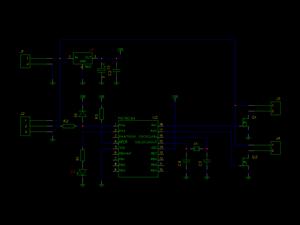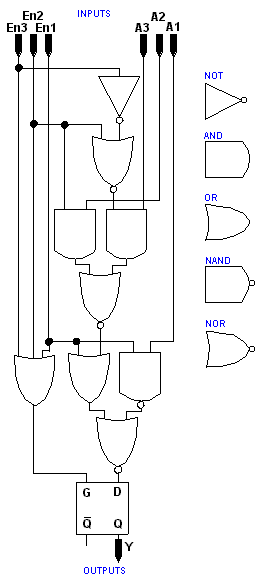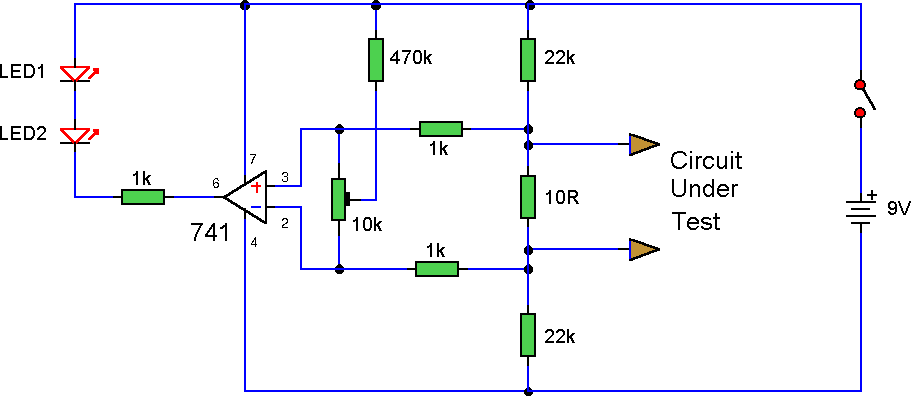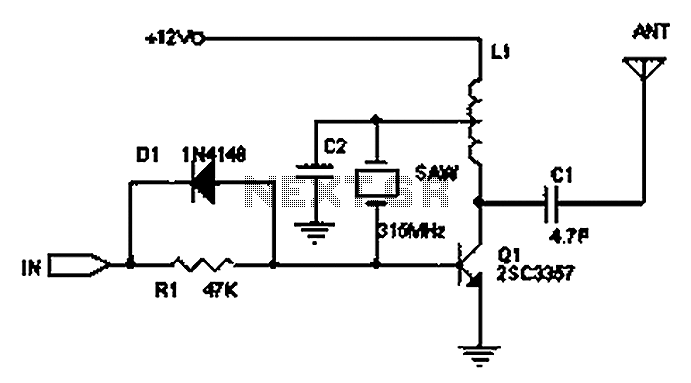
SDS Labs Schematics Archive
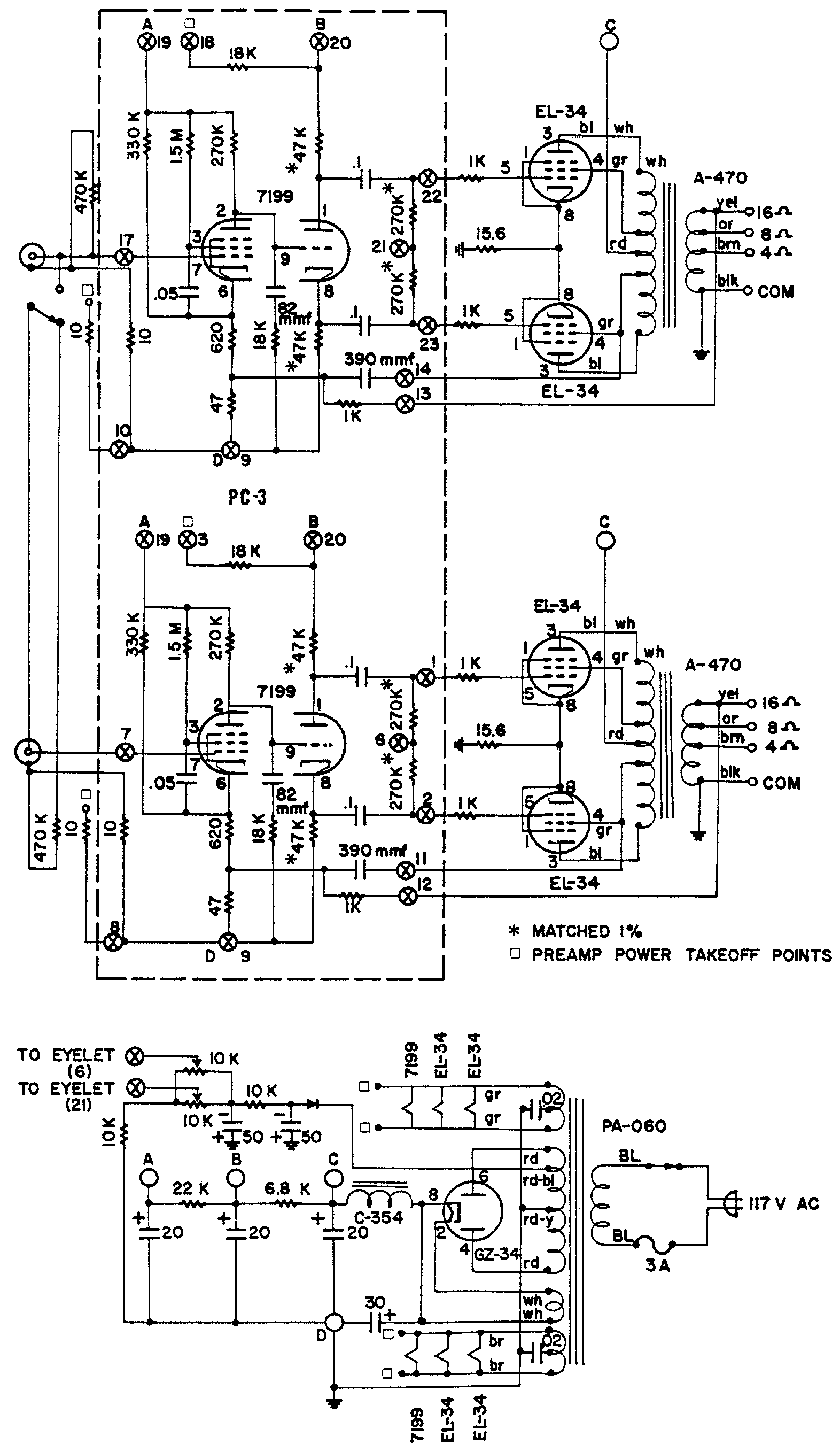
The Dynaco Mark III is the highest power amplifier that was widely sold under the Dynaco name. There was a higher power amp (the Mark VI), but it wasn't widely available. The Dyna MKIII has a basic design flaw that none of the other Dynaco products have. The capacitors in the power supply are not rated at a high enough voltage for the power transformer. This results in the quad capacitor being operated over its rated voltage every time the amp is turned on. The first section of the original quad capacitor is rated at 525 volts, while the B+ voltage can reach as high as 585 volts during startup. This occurs because the rectifier heats up and begins conducting before the power tubes heat up and start drawing power from the high voltage supply. The capacitor fatigue due to this over-voltage issue worsens with age, and there are no longer any 525-volt can capacitors available. Additionally, the amplifier does not have much room underneath to add a large capacitor bank. A printed circuit board has been designed that bolts directly under the output transformer without the need to move any parts. It can be mounted in place using longer 8-32 bolts and a couple of standoffs or by using the original transformer bolts and 8-32 threaded standoffs. The circuit board utilizes eight capacitors, with pairs in series to replace the quad capacitor. Voltage equalizing resistors are included to maintain equal voltage across each capacitor. Provisions are also made on the board for using silicon diodes instead of the 5AR4 rectifier (although it is recommended to keep the tube rectifier). Additionally, there are provisions for film capacitor bypassing for each of the four banks of capacitors. Without the film capacitors installed, the capacitor board can handle B+ voltages up to 800 volts. With the film capacitors in place, the board can handle voltages up to 630 volts. All components for this board are available from Digi-Key, and the total cost is less than the replacement can capacitor for the ST-70.
The next notable amplifier is a vintage Avery Fisher power amplifier. Although it originates from a console, it is a fantastic amplifier. It uses one 12AX7 and a pair of EL84 tubes per channel to produce approximately 15 watts, delivering some of the best sound quality for that power level. One of the recommended models is the SA-16, a small mono power amplifier that employs a pair of EL84 (6BQ5) output tubes operating in ultralinear mode. It uses a 6AN8 as the input and phase splitter and an EZ81 (6CA4) as the rectifier. This compact amplifier has exceptional output transformers, boasting impressive specifications with -3 dB points at 8 Hz and 65 kHz at full power. The square wave response at 20 Hz (5 watts) is notably clean, suggesting minimal transformer influence. The output transformers are larger than those found in the VTL 50/50 amp, despite this amplifier only being rated for 12 watts.
The original design incorporates two feedback schemes. The first is a traditional voltage feedback scheme, where a portion of the output signal is taken from the 16-ohm tap on the output transformer and fed back into the cathode of the input pentode. This configuration yields excellent sound quality. The second scheme employs both current feedback and voltage feedback. In this configuration, the current from the speaker is sensed via a small-value resistor and fed back into the cathode of the input stage, while the voltage feedback from the amplifier's output is reduced by approximately half to maintain similar total feedback levels. Although this feedback approach may have performed well with older speakers, it does not provide satisfactory sound quality with modern speakers, such as Mission bookshelf speakers, and performs poorly with Quad ESLs. A switch on the front of the amplifier allows the user to select between the traditional voltage feedback mode and the alternative feedback scheme.The Dynaco Mark III is the highest power amplifier that was widely sold under the dyna name. There was a nigher power amp (the Mark VI), but it wasn`t widely available. The Dyna MKIII has a basic design flaw that none of the other Dynaco products have. The capacitors in the power supply are not rated at a high enough voltage for the power transfor mer. This results in the quad cap being run over it`s rated voltage every time the amp is turned on. The first section of the original quad cap is rated at 525 volts and the B+ goes as high as 585 volts during start up. This is due to the fact that the rectifier heats up and begins conducting before the power tubes heat up and start drawing power from the high voltage supply.
The capacitor fatigue due to this over-voltage problem just get`s worse with age, and to make matters worse, there isn`t any 525 volt can caps available anymore. The amplifier doesn`t have much room underneath to add a large capacitor bank either. I have devised a printed circuit board that bolts directly under the output transformer without having to move any parts.
It can be mounted in place using longer 8-32 bolts and a couple stand-offs or using the original transformer bolts and 8-32 threaded stand-offs. The circuit board uses 8 capacitors, with pairs in series to replace the quad cap. There are voltage equalizing resistors to keep the voltage across each cap equal. There is also provisions on the board for using silicon diodes instead of the 5AR4 rectifier (although I would recommend keeping the tube rectifier).
There is also provisions on the board for film capacitor bypass for each of the 4 banks of capacitors. Without the film caps installed the capacitor board can handle B+ voltages up to 800 volts. With the film caps in place the board can handle voltages up to 630 volts. All of the parts for this board are available from Digi-Key, and the total cost is less than the replacement can cap for the ST-70.
This next goodie is a vintage Avery Fisher power amp. It`s from a console, but don`t let that fool you, it`s a fantastic amp! It uses one 12AX7 and a pair of EL84`s per channel to produce about 15 watts. And it`s some of the best 15 watts I`ve heard. One of my current favorites for the original Quad ESL`s It`s called the SA-16. This is a small mono power amplifier. It uses a pair of EL84 (6BQ5) output tubes running in Ultralinear mode. It uses a 6AN8 as the input and phase splitter, and a EZ81 (6CA4) as the rectifier. This little amp was quite an eye opener for me. It has fantastic output transformers, I`m talking just plain amazing. The amp`s -3 dB points are at 8 Hz and 65 KHz at full power. Plus the Square wave response at 20 Hz (5 watts) is very clean, it looks like there isn`t a transformer there at all. After all the most critical part of all tube amps are the output transformers. These transformers (I believe that they were made by Chicago Standard), are larger than the transformers that are on the VTL 50/50 amp, but this amp is only rated for 12 watts!
The amp was originally designed with two feedback schemes. The first is the traditional voltage feedback scheme, where some of the output signal is taken from the 16 ohm tap on the output transfomer, and fed back into the cathode of the input pentode. The amp sounds amazing in this mode. The second scheme uses some current feedback as well as voltage feedback. With this second scheme, the current from the speaker is senced via a small value resistor and fed back into the cathode of the input stage.
The voltage feedback from the output of the amp is reduced by about half to keep the total feedback about the same. This may have worked well with old speakers, but doesn`t sound very good with my Mission bookshelf speakers.
And it sounds just awful with the Quad ESL`s. You can flip a switch on the front of the amp to select either the great sounding traditional all voltage feedback, or the b 🔗 External reference
The next notable amplifier is a vintage Avery Fisher power amplifier. Although it originates from a console, it is a fantastic amplifier. It uses one 12AX7 and a pair of EL84 tubes per channel to produce approximately 15 watts, delivering some of the best sound quality for that power level. One of the recommended models is the SA-16, a small mono power amplifier that employs a pair of EL84 (6BQ5) output tubes operating in ultralinear mode. It uses a 6AN8 as the input and phase splitter and an EZ81 (6CA4) as the rectifier. This compact amplifier has exceptional output transformers, boasting impressive specifications with -3 dB points at 8 Hz and 65 kHz at full power. The square wave response at 20 Hz (5 watts) is notably clean, suggesting minimal transformer influence. The output transformers are larger than those found in the VTL 50/50 amp, despite this amplifier only being rated for 12 watts.
The original design incorporates two feedback schemes. The first is a traditional voltage feedback scheme, where a portion of the output signal is taken from the 16-ohm tap on the output transformer and fed back into the cathode of the input pentode. This configuration yields excellent sound quality. The second scheme employs both current feedback and voltage feedback. In this configuration, the current from the speaker is sensed via a small-value resistor and fed back into the cathode of the input stage, while the voltage feedback from the amplifier's output is reduced by approximately half to maintain similar total feedback levels. Although this feedback approach may have performed well with older speakers, it does not provide satisfactory sound quality with modern speakers, such as Mission bookshelf speakers, and performs poorly with Quad ESLs. A switch on the front of the amplifier allows the user to select between the traditional voltage feedback mode and the alternative feedback scheme.The Dynaco Mark III is the highest power amplifier that was widely sold under the dyna name. There was a nigher power amp (the Mark VI), but it wasn`t widely available. The Dyna MKIII has a basic design flaw that none of the other Dynaco products have. The capacitors in the power supply are not rated at a high enough voltage for the power transfor mer. This results in the quad cap being run over it`s rated voltage every time the amp is turned on. The first section of the original quad cap is rated at 525 volts and the B+ goes as high as 585 volts during start up. This is due to the fact that the rectifier heats up and begins conducting before the power tubes heat up and start drawing power from the high voltage supply.
The capacitor fatigue due to this over-voltage problem just get`s worse with age, and to make matters worse, there isn`t any 525 volt can caps available anymore. The amplifier doesn`t have much room underneath to add a large capacitor bank either. I have devised a printed circuit board that bolts directly under the output transformer without having to move any parts.
It can be mounted in place using longer 8-32 bolts and a couple stand-offs or using the original transformer bolts and 8-32 threaded stand-offs. The circuit board uses 8 capacitors, with pairs in series to replace the quad cap. There are voltage equalizing resistors to keep the voltage across each cap equal. There is also provisions on the board for using silicon diodes instead of the 5AR4 rectifier (although I would recommend keeping the tube rectifier).
There is also provisions on the board for film capacitor bypass for each of the 4 banks of capacitors. Without the film caps installed the capacitor board can handle B+ voltages up to 800 volts. With the film caps in place the board can handle voltages up to 630 volts. All of the parts for this board are available from Digi-Key, and the total cost is less than the replacement can cap for the ST-70.
This next goodie is a vintage Avery Fisher power amp. It`s from a console, but don`t let that fool you, it`s a fantastic amp! It uses one 12AX7 and a pair of EL84`s per channel to produce about 15 watts. And it`s some of the best 15 watts I`ve heard. One of my current favorites for the original Quad ESL`s It`s called the SA-16. This is a small mono power amplifier. It uses a pair of EL84 (6BQ5) output tubes running in Ultralinear mode. It uses a 6AN8 as the input and phase splitter, and a EZ81 (6CA4) as the rectifier. This little amp was quite an eye opener for me. It has fantastic output transformers, I`m talking just plain amazing. The amp`s -3 dB points are at 8 Hz and 65 KHz at full power. Plus the Square wave response at 20 Hz (5 watts) is very clean, it looks like there isn`t a transformer there at all. After all the most critical part of all tube amps are the output transformers. These transformers (I believe that they were made by Chicago Standard), are larger than the transformers that are on the VTL 50/50 amp, but this amp is only rated for 12 watts!
The amp was originally designed with two feedback schemes. The first is the traditional voltage feedback scheme, where some of the output signal is taken from the 16 ohm tap on the output transfomer, and fed back into the cathode of the input pentode. The amp sounds amazing in this mode. The second scheme uses some current feedback as well as voltage feedback. With this second scheme, the current from the speaker is senced via a small value resistor and fed back into the cathode of the input stage.
The voltage feedback from the output of the amp is reduced by about half to keep the total feedback about the same. This may have worked well with old speakers, but doesn`t sound very good with my Mission bookshelf speakers.
And it sounds just awful with the Quad ESL`s. You can flip a switch on the front of the amp to select either the great sounding traditional all voltage feedback, or the b 🔗 External reference
